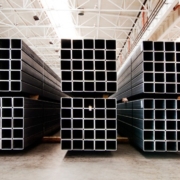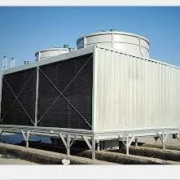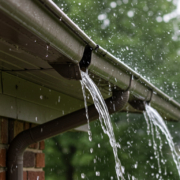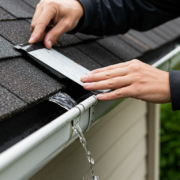Where Can You Buy High-Quality Hollow Sections in Malaysia?
Strong structures always spring from the right materials. Builders in Malaysia hunt for steel that can carry heavy loads while staying light enough to move with ease. Many turn to hollow section suppliers to secure this mix of strength and flexibility. These sections anchor frameworks, steady scaffolding, and shape both bold and simple projects. From homes to bridges and towers, hollow sections offer lasting safety and value. Choosing them wisely will decide how your project stands through time.
What Are Hollow Sections
Hollow sections are steel pieces shaped like tubes with space inside. They arrive in square, rectangular, or circular forms. This shape lets them deliver strength while using less steel.
Types of Hollow Sections
- Rectangular Hollow Sections (RHS): Builders often use them for frames and heavy loads.
- Square Hollow Sections (SHS): Designers choose them for fencing and neat layouts.
- Circular Hollow Sections (CHS): These fit pipelines, scaffolding, and smooth curves.
Their range of shapes allows hollow sections to serve many jobs in Malaysia’s growing cities.
Why Choose Hollow Sections
Hollow sections combine strength and lightness. They serve well in both small and large jobs.
- Spread equal strength in every direction.
- Slice and join without trouble
- Stay light enough to carry yet strong enough to hold weight.
- Trim waste during work and design
Everyday Uses of Hollow Sections
You will often spot hollow sections in:
- House and building frameworks
- Road signposts and tall boards
- Sheds and factories
- Transport equipment
Role of Scaffolding in Construction
A trusted scaffolding supplier helps workers climb, stand, and labour with safety. Strong scaffolding carries teams at heights and supports them as they work. When builders tie scaffolding with hollow sections, the project gains both speed and stability.
Key Benefits of Quality Scaffolding
- Lift workers to safe spots.
- Guard lives with firm safety.
- Push projects forward faster.
- Match industry rules with ease.
Types of Scaffolding Commonly Used
- Tube and Clamp Scaffolding: Steel tubes lock together with clamps to offer flexibility.
- Modular Scaffolding: Pre-made parts snap into place for quick builds.
- Frame Scaffolding: Light frames suit smaller jobs and repair work.
Material Strength
Material strength decides how much load steel can carry without bending. Strong hollow sections guard your project, hold weight firmly, and keep structures steady for years.
Section Shapes
Square, rectangular, or circular—each plays a role. Rectangular resists weight one way, circular handles flow in pipes, and square fits balanced designs.
Durability
Malaysia’s damp air often eats steel. So, choose hollow sections that resist rust and wear.
Standards and Certifications
Suppliers must present proof that their steel meets safety codes. This protects your project and your crew.
Hollow Sections Improve Construction Projects
Hollow sections boost building speed, shape flexible designs, and cut costs. Their light yet strong form drives projects forward while securing safe, lasting results on site.
Faster Installation
Because they weigh less, workers can carry them easily and finish work sooner.
Design Flexibility
Architects shape bold designs with hollow sections—curves, open frames, and creative walls.
Cost-Effective Choice
Since they use less steel but still stand strong, hollow sections cut costs without losing quality.
Where to Buy in Malaysia
Malaysia’s steel markets and suppliers stock hollow sections in many shapes and thicknesses. You can visit local distributors, walk through construction markets, or speak with direct manufacturers. Always choose those who share proper documents and quality checks.
Common Sources for Buyers
- Steel Distributors: Hold big stocks with many choices.
- Construction Markets: Offer quick buys for smaller needs.
- Manufacturers: Create custom sections to match project demands.
How to Choose The Right Supplier
The scaffolding supplier you pick can define your project’s success. The right partner delivers quality, guides choices, and ensures your hollow sections stand strong from start to finish.
Check for Quality Assurance
Suppliers must show certificates or reports that prove their steel quality.
Look for After-Sales Support
The right supplier will guide you not just during the buy but also on storage and care.
Compare Variety
Suppliers with a wide stock save you time. You won’t need to search in many places.
Why Malaysian Buyers Prefer Hollow Sections
Malaysia’s roads, bridges, and towers grow fast. Builders favour hollow sections because they endure the hot, wet climate and adapt to both modern and traditional styles.
Sectors Using Hollow Sections Widely
- Housing and commercial buildings
- Energy and oil projects
- Bridges and public works
- Temporary scaffolding works
Hollow Sections After Purchase
Buying strong steel is not the end. You must store, watch, and care for it to extend its life.
Storage Tips
- Lift sections off the ground to block moisture.
- Cover them under sheds to shield from rain.
- Stack safely without bending the shape.
Maintenance in Use
- Brush protective paint or coating on exposed steel.
- Inspect scaffolding and frames often for rust.
- Swap damaged pieces fast to secure worker safety.
Growing Demand for Hollow Sections in Malaysia
Malaysia’s building world races ahead, and hollow sections now power many of these projects. Their blend of strength and lightness makes them a favourite pick for builders.
Why Demand Keeps Rising
- Cities Expand: Urban areas stretch higher and wider, calling for stronger steel.
- Costs Drop: Hollow sections shave expenses while still delivering toughness.
- Design Freedom: Architects craft bold, modern looks with ease.
- Safety First: Reliable steel guards both workers and structures.
Mistakes Buyers Should Avoid
Projects often stumble when buyers skip key steps. Steering clear of these mistakes will save both effort and money.
Errors That Can Damage Your Project
- Skipping Checks: Always scan steel for cracks or rust.
- Ignoring Rules: Only choose steel that meets building codes.
- Picking the Wrong Shape: Wrong sections can weaken your frame.
- Chasing Cheap Deals: Low-cost steel often crumbles under stress.
Pairing Hollow Sections with Scaffolding
Hollow sections and scaffolding team up like strong partners. When builders link them, projects gain speed, safety, and long life.
Key Advantages for Construction Sites
- Faster Builds: Light steel lifts quickly, cutting labour time.
- Stronger Support: Tough scaffolding steadies crews at any height.
- Lower Costs: Using both together slashes waste and spending.
- Safer Sites: Steel and scaffolding shield teams on the ground and above.
Final Thought
Hollow section suppliers do more than hold buildings—they spark trust in every stage of construction. When you choose tough materials and reliable suppliers, your projects rise with safety and strength. Durable steel, paired with firm scaffolding, drives progress and shields workers on site. By focusing on quality and strong guidance, you gain more than steel—you gain peace of mind. The right hollow sections don’t just build today; they guard tomorrow and fuel confidence in every project you create.
Frequently Asked Questions
Q1. What makes steel sections useful in construction?
Steel sections carry heavy weight, endure for many years, and bend into different shapes. Builders rely on them to form frames, scaffolding, and safe structures.
Q2. How do I know if the steel is of good quality?
You can spot good steel by checking certifications, scanning surfaces for rust or cracks, and asking the supplier to show proper test results.
Q3. Why should scaffolding be used on every project?
Scaffolding lifts workers to safe spots, cuts risk at heights, and speeds up tasks. It lets crews reach every area without fear.










